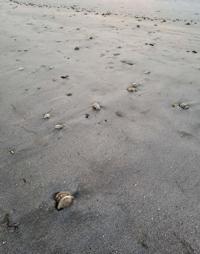A few thousand cannonball jellies littered the Sullivan’s Island beach over the past few days.
What’s that all about? One more sign of an early spring.
Cannonball jellyfish tend to turn up in the nearshore waters during April, pushed in from the Gulf Stream with washes of warmer water. They’re usually a sign that the surf is approaching that magic room-temperature zone a lot of people find plungeable on a hot day.
Temperature changes, winds and high tides tend to lead to the beaching of large numbers of a variety of different finfish, shellfish or other sea life from time to time. It can be startling even to people who frequent the dunes.
But it’s still early March. The waters off Charleston aren’t warming up any quicker than usual so far. The winds, though, are out there, and warmer water isn’t far away.
“We’ve had a fair amount of onshore winds” from the ocean that tend to push in creatures like jellies, said meteorologist Ron Morales of the National Weather Service’s Charleston office.
The jellies “are a bit early, maybe brought on by early spring-like temperatures and warmer waters to our south,” said Shea Gibson, a kiteboarding regular at the island and a Charleston-based meteorologist with the forecasting company WeatherFlow.
The mild winter and stretches of balmy days have any number of prognosticators calling for an early spring. The federal Climate Prediction Center is calling for warmer-than-average temperatures in the Southeast, at least through most of April.
Then there’s the early blooming azaleas and Easter lilies, trees budding and migrating birds making their annual spring arrivals.
Weirdly, even the planet agrees.
Spring officially arrives a day or two earlier than normal. The vernal equinox, March 19 at 11:50 p.m., according to Farmer’s Almanac — the earliest moment in more than 100 years. It’s a freak of the Earth’s wobbly orbit and the varying pulls of other planets as they get closer or farther away.
The vernal equinox is the point when the sun is directly above the equator on its way north for the summer, itself a freak of how the Earth turns while making its way around the sun.
The cannonballs are abundant and relatively innocuous among jellies. They can sting, despite the “harmless” rep they have cultivated over the years, but the sting is too mild for people to notice.
The real stingers — lion’s manes, sea nettles, sea wasps, box jellies and the like — tend to show up in deeper winter or hotter summer.
But strong winds out of the east at any time can push in man-of-wars, the alluring blue jellyfish-like creatures with “sails” and screamingly painful stings.
Reach Bo Petersen at @bopete on Twitter or 843-937-5744.








Recent Comments